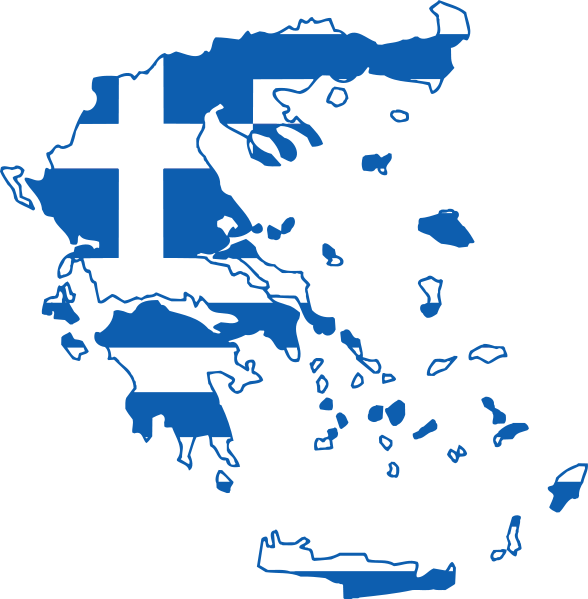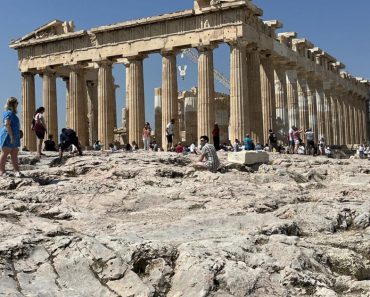
Homer’s Odyssey tells the story of Odysseus’ attempt to return home from Troy to Ithaca. Historians agree that Troy was in northwest Anatolia, while Ithaca was off Western Greece. However, a popular theory among some researchers today is that the Odyssey is actually set in the Baltic Sea around Scandinavia. What is the supposed evidence for this, and does it stand up to scrutiny?
Why might the Odyssey be set in Scandinavia?
The basic reason for this theory is that, according to some researchers, there are many details in the Iliad and the Odyssey which do not correspond to the Mediterranean world. For instance, there are references to tides despite the fact that the Mediterranean Sea has no noticeable tides. Furthermore, there are numerous references to lush vegetation and extensive woodlands. Some researchers argue that this is inconsistent with a Mediterranean setting, given that much of Greece and Anatolia is very rugged in comparison with Northern Europe.

Researcher Felice Vinci, the main proponent of this theory, argues that Homer consistently presents the world of his narratives as a cold and harsh place. He regularly makes mention of storms and even refers to snow. In the Odyssey, the sea—in addition to Troy, Ithaca, and various other locations—is described as “misty.” Some of Homer’s characters wear thick coats, again indicating a cold environment, and Vinci notes there are many details that align with Viking ships and customs. The use of chariots in the Iliad is likewise not reflective of Mycenaean Greek military practices but is more consistent with how ancient Celts employed chariots in warfare.
Vinci points out that there are numerous instances of geographical descriptions in the Odyssey which do not line up with the supposed locations in the Mediterranean. For instance, the land of the Laestrygonians supposedly had extremely long days. Based on this evidence, where do proponents of this theory place the Odyssey?
Odysseus’ route near Scandinavia
According to Felice Vinci, the Odyssey is set in the Baltic Sea, the body of water in the midst of Scandinavia. He believes that the locations described in the Odyssey are reflective of this area. Odysseus’ starting location was Troy. Vinci claims that Troy was not Hisarlik in Anatolia but was actually Toija, which is about 62 miles (100 km) west of Helsinki, the capital of Finland.
The problem is that there is no evidence of a massive ancient city in this area. Nonetheless, Vinci claims that Homer’s description implies that the wall of Troy was simply a primitive wooden palisade—an architectural feature consistent with Nordic Bronze Age building practices.
Regarding Odysseus’ destination, Vinci claims that Ithaca and its three neighboring islands correspond to the South Funen Archipelago just off the coast of Denmark. According to his interpretation, the island of Doulichion (whose name means “long”) supposedly matches Langeland, the island of Same corresponds to Aerø, and the island of Zacynthus aligns with Tåsinge. Ithaca itself, Vinci says, brings to mind the island of Lyø. Homer speaks of an islet in the sea between Ithaca and Same, which, according to Vinci, corresponds to the island of Avernakø between Lyø (supposedly Ithaca) and Aerø (supposedly Same).
Environmental arguments for a northern setting
Before examining the issues with this theoretical placement of the Odyssey in the waters of Scandinavia in detail, let us examine the alleged problems associated with a Mediterranean setting for Homer’s poems.
Firstly, the idea that lush vegetation and cold weather is out of place in the Mediterranean is nothing more than a matter of perspective. What can be considered “lush” vegetation and “extensive” woodlands depends entirely on the experience of the observer. If someone had only ever experienced life in the Mediterranean, then he would have no other reference point from which to describe the world.
However, to be clear, the countries surrounding the Mediterranean do indeed have plenty of lush vegetation and extensive woodlands, regardless of whether or not they are compared to Northern Europe. Furthermore, temperatures on Ithaca can drop to near freezing. The ancient Greeks did use fur clothing, and fur was an item of trade by the Phoenicians and other groups. Certain areas do also get snow. Mist, likewise, is perfectly common in the Mediterranean Sea, as are storms.
Cultural arguments for a northern setting
Another major issue with Vinci’s theory is that much of the evidence he cites in support of his theory comes from the wrong time period. For instance, his repeated references to Viking customs obviously cannot be used as evidence for placing the Odyssey in Bronze Age Scandinavia, thousands of years prior to the Vikings.
As for the chariot argument, it is important to note that the Celts did not reside in Scandinavia. Therefore, Celtic chariot customs cannot be used to support the claim that Scandinavia is the setting of the Odyssey or the Iliad. Similarly, the peculiar length of days described in the land of the Laestrygonians does not necessarily indicate a northern destination. In fact, such an argument would undermine Vinci’s theory—if all of the Odyssey‘s locations were in the far north, there would be nothing extraordinary about the long days of the Laestrygonians.
In reality, Homer’s description of the unusual days and nights experienced by the Laestrygonians closely resembles Hesiod’s account of the entrance to the Underworld. This parallel suggests that their land may have been situated near Cape Taenarum, traditionally believed to be the gateway to the Underworld.
Problems with evidence placing the Odyssey in Scandinavia
But what about Vinci’s arguments for linking the Odyssey‘s locations to Scandinavia? His placement of the narrative actually makes little geographic sense in light of the narrative details in the Iliad and Odyssey. For instance, Toija is quite distant from the sea, yet, in the Iliad, Troy is located near the coast.
The idea that Avernakø could possibly be the islet between Ithaca and Same is clearly not viable. First of all, it is not a small islet but is roughly the size of Lyø, Vinci’s Ithaca. Secondly, it is also not situated between Lyø and Aerø (Vinci’s Same). Therefore, Avernakø does not match up with the Asteris described in the Odyssey. Similar objections can be raised against many other identifications proposed within this theory as well.
In conclusion, there is little justification for rejecting the widely accepted Mediterranean setting of the Odyssey, and no convincing evidence supports placing the story in Scandinavia.







